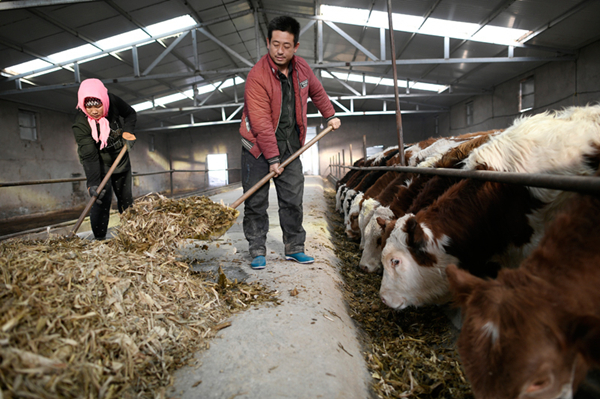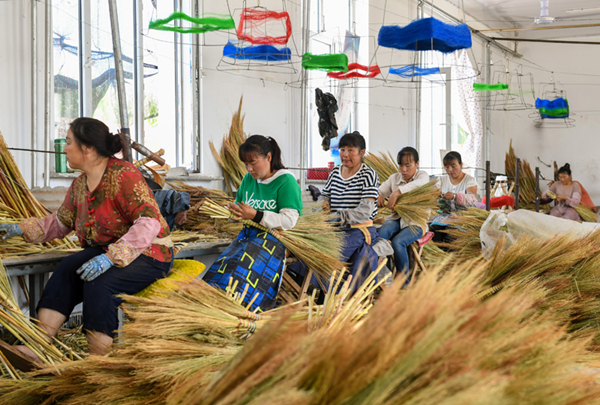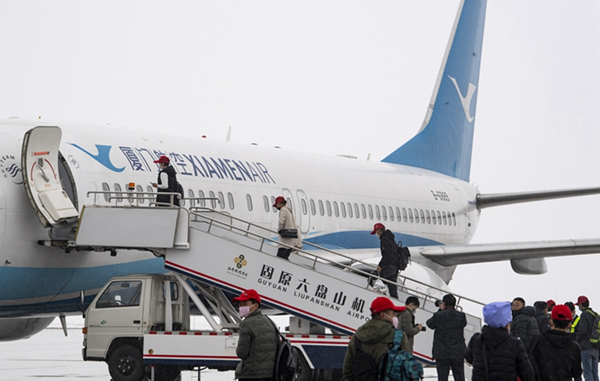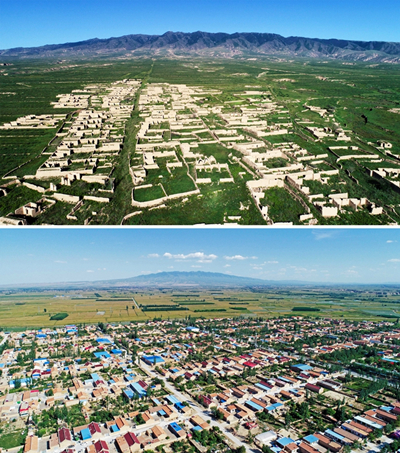BEIJING — Under the leadership of the Communist Party of China (CPC), the world's largest developing country has achieved a complete eradication of extreme poverty, raising more than 770 million poor people from poverty since its reform and opening-up in late 1970s.
According to the World Bank standard, the figure accounted for more than 70 percent of the global total over the same period, said a white paper released on April 6 by the State Council Information Office.
The 100-year history of the CPC is a history about eradicating poverty and backwardness, and leading people's fight for a better life, Xu Lin, director of the office, said at a press conference when introducing the paper.

SOLEMN COMMITMENT DELIVERED
The Chinese nation had long been plagued by poverty at a scale and a level of severity which were rarely seen anywhere else in the world.
Since its founding in July 1921, the CPC has always taken the happiness of the people and rejuvenation of the nation as its aspiration, said the white paper titled "Poverty Alleviation: China's Experience and Contribution."

The founding of the People's Republic of China in 1949 and the establishment of the socialist system have provided basic institutional guarantees for addressing the root causes of poverty. The reform and opening-up, which started about four decades ago, has accelerated the country's development and poverty alleviation.
"Ensuring that poor people and poor areas will enter the moderately prosperous society together with the rest of the country is a solemn promise made by our Party," President Xi Jinping was quoted as saying.

Since the 18th CPC National Congress in 2012, the Party Central Committee, with Comrade Xi Jinping at the core, has fought a decisive battle against poverty that has been unprecedented in scale and intensity, and has benefited the largest number of people in human history, according to Xu.
To fulfill the commitment, the leadership has mobilized the energies of the whole Party, the whole country, and the whole of society. More than 3 million first Party secretaries and resident working team members have been selected and dispatched to carry out targeted poverty reduction since 2013.
Through continuous efforts, the final 98.99 million impoverished rural residents had all been lifted out of poverty, and all 832 impoverished counties and 128,000 villages had been removed from the poverty list by the end of 2020.
The historic achievements came with huge sacrifices. More than 1,800 CPC members and officials have lost their lives in the cause of poverty reduction, according to the paper.

TARGETED STRATEGY
"To help the poor, we must know who they are," the paper said.
During its poverty alleviation practices, China has developed a set of standards and procedures to accurately identify the poor, the causes of their poverty, and their needs. These were summarized as targeted efforts in six areas, referring to efforts to identify the poor accurately, arrange targeted programs, utilize capital efficiently, take household-based measures, dispatch first Party secretaries based on village conditions, and achieve the set goals.

For instance, poor households are identified primarily based on their incomes, with consideration given to other factors including housing, education, and health, while for villages, consideration is given to the incidence of poverty, the per capita net income of the villagers, and income from businesses run by village collectives.
The individuals and villages confirmed as poor were then registered and a national poverty alleviation information system was created.

"Through this registration system, for the first time in the history of poverty alleviation, China has identified every poor individual in every village," the paper said.
The strategy of targeted poverty alleviation is China's strongest "weapon" in its final battle against poverty, and a major innovation in the theory and practice of poverty reduction, which highlights the CPC's sound approach whereby all actions are based on actual conditions and conform to the needs of development, it said.

PEOPLE-CENTERED PHILOSOPHY
China's success in poverty alleviation has proven that the problem of poverty, in essence, is how the people should be treated: the people-centered philosophy is the fundamental driving force behind this cause.
"The root cause of poverty is inadequate development," the paper said, adding that development is the most effective way to eradicate poverty.

During its fight against poverty, China has taken five measures, including boosting the economy to provide more job opportunities, relocating poor people from inhospitable areas, compensating for economic losses associated with reducing ecological damage, improving education in impoverished areas, and providing subsistence allowances for those unable to shake off poverty through their own efforts alone.
Over the course, investment from the central, provincial, city and county governments have totaled nearly 1.6 trillion yuan (about $244 billion), including 660.1 billion yuan from the central budget.

China's successful practice and valuable experience in eliminating extreme poverty have deepened human understanding of poverty reduction trends, enriched the theory of international poverty reduction, and boosted the confidence of other countries, especially developing ones, in eradicating extreme poverty.
Poverty is not predestined, nor is it unconquerable, the paper said. "China's experience in poverty alleviation indicates that courage, vision, sense of responsibility, and the eagerness to take on challenges are the most essential."